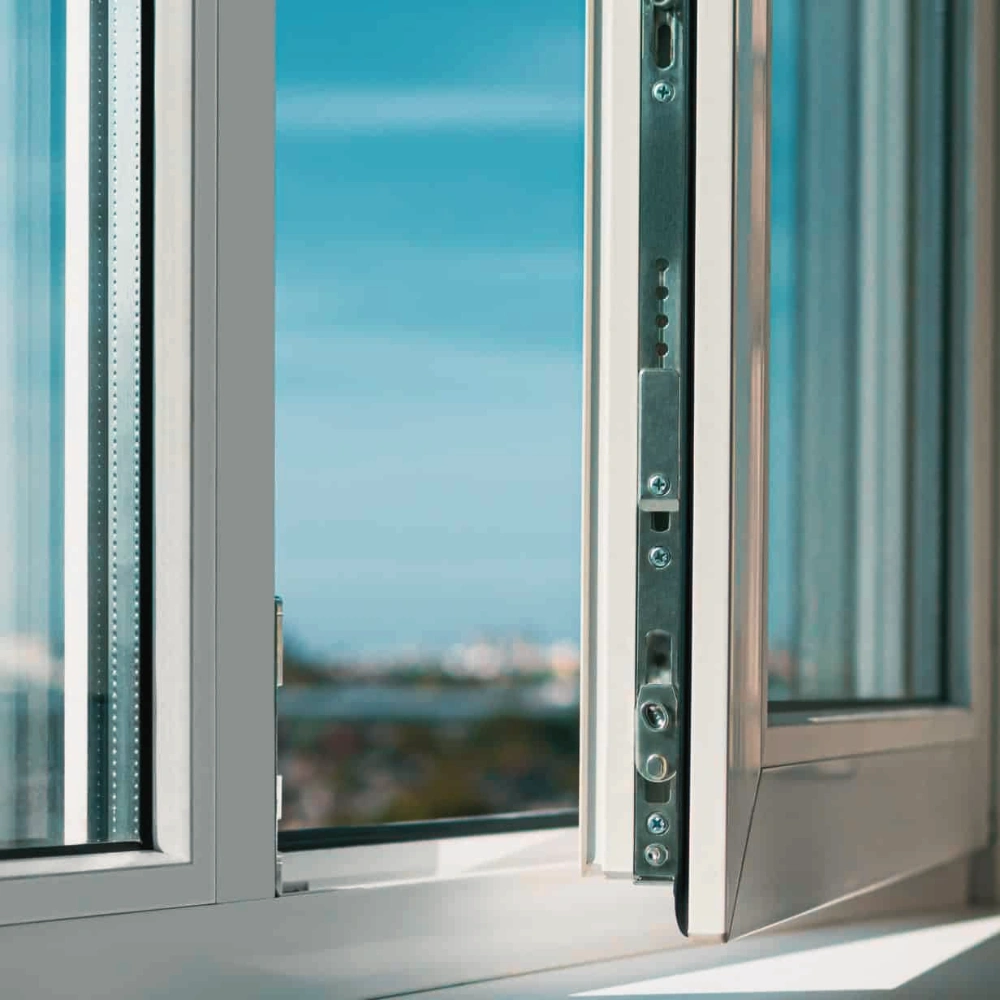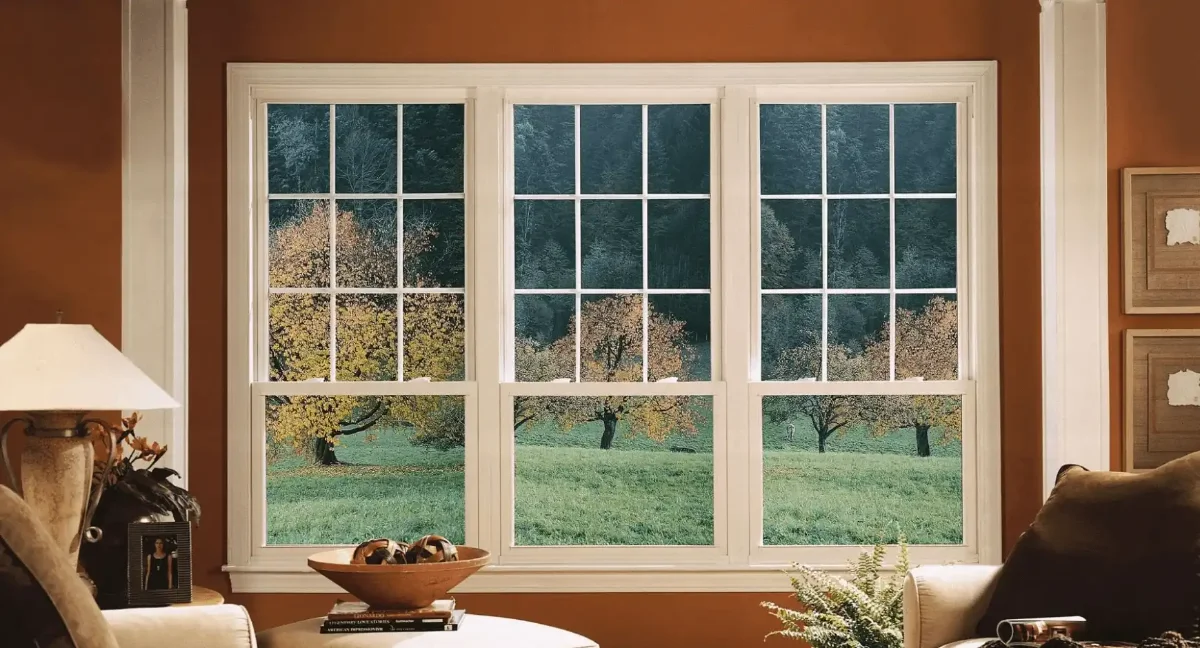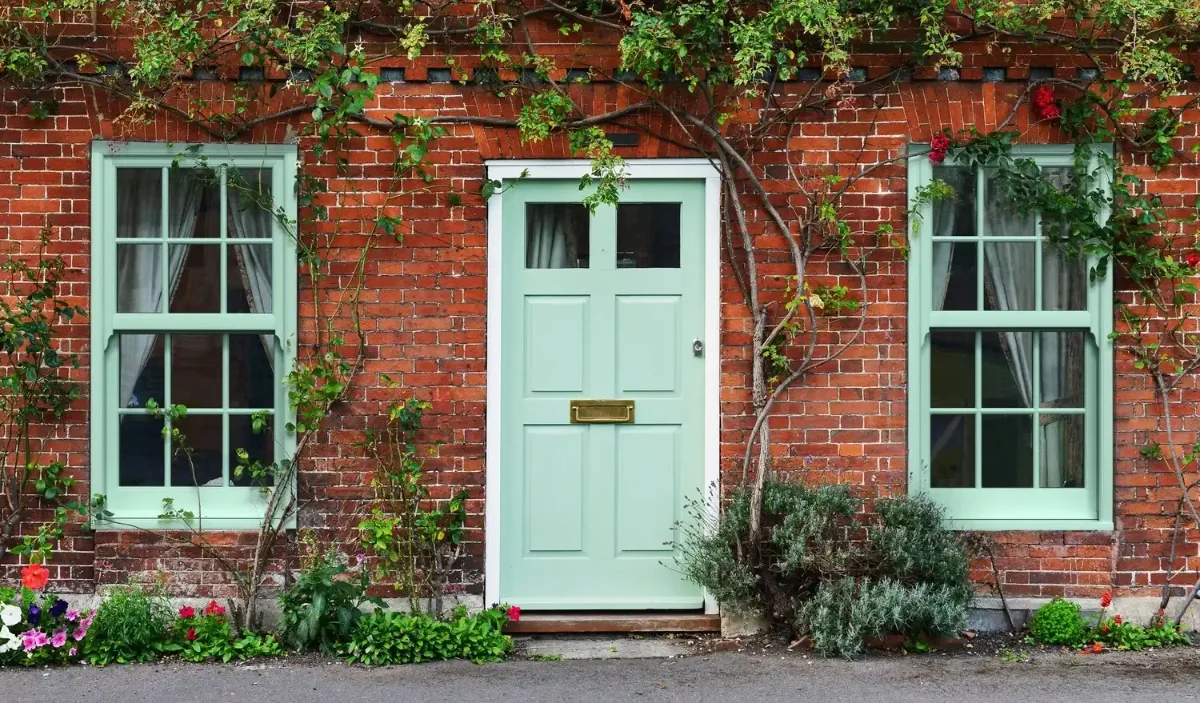The £3,000 Revelation: When Glass Makes All the Difference
Standing in her newly renovated kitchen on a bitter February morning, Rachel Martinez couldn’t understand why she still felt cold despite having spent £15,000 on new windows just six months earlier. The frames were beautiful—handcrafted timber with authentic period details—but something wasn’t right. Her heating bills remained stubbornly high, and she could feel drafts near the windows despite the premium installation.
The revelation came during a routine energy assessment. While her window frames were exceptional, the glazing specification was basic standard double glazing, barely meeting minimum Building Regulations. The assessor explained that she was experiencing what many homeowners discover too late: the glass in your windows has far more impact on comfort and energy efficiency than the frames that hold it.
Three months and £3,000 later, Rachel’s existing frames were fitted with high-performance glazing units featuring low-E coatings, argon gas fills, and warm-edge spacers. The transformation was immediate and dramatic. Her kitchen stayed warm on cold mornings, condensation disappeared, and her next heating bill dropped by 35%.
Rachel’s experience illustrates a crucial truth about modern windows: while frame materials get most of the attention, glazing technology is where the real performance gains happen. The difference between basic and high-performance glazing can be greater than the difference between single and double glazing was a generation ago.
After nearly four decades of witnessing glazing technology evolve from simple sealed units to today’s sophisticated multi-layer systems, I’ve learned that understanding glazing options is essential for anyone serious about window performance. The choices you make about glass will determine your comfort, energy bills, and satisfaction with your windows for decades to come.
Let me guide you through the complex world of modern glazing technology and help you understand what really matters for your specific situation.
Understanding Modern Glazing: Beyond Simple Double Glazing
The glazing in your windows is actually a sophisticated system engineered to manage heat, light, sound, and safety. What appears to be simple glass is often a complex assembly of multiple layers, coatings, gas fills, and spacer systems, each contributing to overall performance.
Modern glazing units consist of two or more panes of glass separated by spacers and sealed around the perimeter. The space between the panes can be filled with air or specialized gases, and the glass surfaces can be treated with invisible coatings that dramatically alter their properties. Understanding these components helps you make informed decisions about what matters most for your home.
The thermal performance of glazing is measured by its U-value, expressed in watts per square meter per degree Kelvin (W/m²K). Lower numbers indicate better insulation, with single glazing typically around 5.0 W/m²K, standard double glazing around 2.8 W/m²K, and high-performance systems achieving 1.0 W/m²K or better. However, U-values only tell part of the story—solar heat gain, light transmission, and acoustic performance are equally important considerations.
The evolution of glazing technology has been driven by increasingly demanding energy efficiency requirements and growing awareness of comfort factors beyond simple heat loss. Today’s glazing systems can be precisely tuned to optimize performance for specific orientations, climates, and user requirements, making the selection process both more complex and more rewarding than ever before.
Double Glazing: The Foundation of Modern Performance
Double glazing remains the most common glazing specification in the UK, but the performance range within this category is enormous. Understanding the variables that affect double glazing performance helps you specify systems that deliver the comfort and efficiency you’re seeking.
The basic principle of double glazing is simple: two panes of glass create an insulating air space that dramatically reduces heat transfer compared to single glazing. However, the devil is in the details. The thickness of the glass, the width of the air gap, the type of gas filling the space, and any coatings applied to the glass surfaces all significantly impact performance.
Standard double glazing typically uses 4mm glass panes separated by a 12mm or 16mm air space, achieving U-values around 2.8 W/m²K. This represents a significant improvement over single glazing, but falls short of current Building Regulations requirements for new installations, which demand 1.6 W/m²K or better.
High-performance double glazing systems can achieve U-values as low as 1.0 W/m²K by incorporating low-emissivity coatings, gas fills, and optimized spacer systems. These systems cost typically 20-30% more than standard double glazing but deliver performance that rivals basic triple glazing while maintaining the slimmer profile that many homeowners prefer.
The sweet spot for most UK applications lies in what the industry calls “enhanced double glazing”—systems that incorporate low-E coatings and gas fills to achieve U-values around 1.4 W/m²K. This specification delivers excellent thermal performance at reasonable cost while fitting into most existing window frames without modification.
Rachel’s upgrade exemplifies this approach. Her existing timber frames accommodated 24mm glazing units, allowing the installation of 4mm low-E glass, 16mm argon-filled cavity, and 4mm outer pane with warm-edge spacers. The result was a U-value improvement from 2.8 to 1.2 W/m²K, transforming the thermal performance of her windows while preserving their authentic appearance.
Triple Glazing: When More Really Is Better
Triple glazing adds a third pane of glass and a second insulating cavity, typically achieving U-values between 0.8 and 1.2 W/m²K. While this represents a significant thermal improvement over double glazing, the benefits must be weighed against increased cost, weight, and thickness.
The thermal advantage of triple glazing is most pronounced in exposed locations, buildings with large glazed areas, or properties targeting very high energy efficiency standards such as Passive House. In these applications, the additional thermal performance can justify the premium cost and installation complexity.
However, triple glazing is not simply “better double glazing.” The additional glass pane reduces light transmission by approximately 10%, which can be noticeable in north-facing rooms or properties where natural light is already limited. The increased weight also places additional stress on hinges and opening mechanisms, potentially requiring hardware upgrades.
The thickness of triple glazing units, typically 36-44mm compared to 24-28mm for double glazing, can present installation challenges in existing frames. Many older windows cannot accommodate triple glazing without significant frame modifications, limiting retrofit applications.
In new construction or major renovations where frames can be specified to accommodate triple glazing, the technology makes most sense in specific circumstances. Properties in exposed locations, homes with large south-facing glazed areas that need to balance solar gain with thermal performance, and buildings targeting very low energy consumption can all benefit from the enhanced performance triple glazing provides.
The cost premium for triple glazing is typically 40-60% over equivalent double glazing systems. For most UK applications, this premium is difficult to justify through energy savings alone, but the comfort benefits—more consistent internal temperatures and reduced cold drafts—can make the investment worthwhile for some homeowners.
Low-E Coatings: The Invisible Game Changer
Low-emissivity coatings represent one of the most significant advances in glazing technology, providing substantial performance improvements with minimal visual impact or cost increase. These microscopically thin metallic coatings are applied to glass surfaces to control the passage of radiant heat while maintaining excellent light transmission.
The physics behind low-E coatings is elegant: they reflect long-wave infrared radiation (heat) back into the room while allowing short-wave solar radiation (light) to pass through. This means your heating system’s warmth stays inside during winter, while natural light continues to illuminate your home normally.
There are two main types of low-E coatings, each optimized for different applications. Hard coat low-E, applied during glass manufacturing, provides good durability and moderate performance improvement. Soft coat low-E, applied in a separate vacuum process, offers superior thermal performance but requires protection within the sealed unit cavity.
The positioning of low-E coatings within double or triple glazing units is crucial for optimal performance. In double glazing, the coating is typically applied to surface 3 (the internal surface of the outer pane) to reflect heat back into the room. In triple glazing, multiple coatings may be used on different surfaces to optimize both thermal performance and solar control.
Modern low-E coatings can be engineered to provide different balances between thermal insulation and solar control. High-gain low-E coatings maximize solar heat gain for north-facing windows or cold climates, while solar control low-E coatings reduce unwanted heat gain on south and west-facing exposures.
The performance improvement from low-E coatings is substantial, typically improving U-values by 0.3-0.5 W/m²K compared to uncoated glass. This improvement costs relatively little—usually 10-15% premium over standard glazing—making low-E coatings one of the most cost-effective glazing upgrades available.
Gas Fills: Engineering the Invisible
The space between glass panes in sealed units is typically filled with air, but replacing this air with specialized gases can significantly improve thermal performance. Argon, krypton, and xenon gases all have lower thermal conductivity than air, reducing heat transfer across the glazing cavity.
Argon gas is the most commonly used alternative to air, providing approximately 15% improvement in thermal performance at modest cost. Argon is an inert noble gas that occurs naturally in the atmosphere, making it safe and environmentally benign. The gas is introduced during the glazing unit manufacturing process and sealed within the unit for the life of the window.
Krypton gas offers superior thermal performance to argon, with thermal conductivity approximately 50% lower than air. However, krypton is significantly more expensive than argon, making it economically viable only in high-performance applications or where cavity widths are restricted. Krypton’s superior performance in narrow cavities makes it particularly useful in retrofit applications where thick glazing units cannot be accommodated.
Xenon gas provides the ultimate thermal performance, with thermal conductivity nearly 70% lower than air. However, the extreme cost of xenon limits its use to specialized applications where maximum performance is required regardless of cost.
The practical benefits of gas fills extend beyond simple thermal performance. Gas-filled units typically experience less internal convection, reducing temperature variations across the glass surface and improving comfort near windows. The reduced internal air movement also minimizes the risk of internal condensation in extreme conditions.
Gas fill retention is a critical consideration for long-term performance. Quality sealed units should retain their gas fill for decades, but poor manufacturing or installation can lead to gradual gas loss and performance degradation. Reputable manufacturers provide warranties on gas fill retention, typically guaranteeing 90% retention after 20 years.
The cost of gas fills varies significantly with the gas chosen. Argon fills typically add 5-10% to glazing unit costs, while krypton can add 25-40%. For most applications, argon provides the best balance of performance improvement and cost, while krypton makes sense only where its specific advantages justify the premium.
Spacer Systems: The Thermal Bridge Solution
The spacer system that separates glass panes and maintains the sealed unit cavity is often overlooked, but it plays a crucial role in overall glazing performance. Traditional aluminum spacers create significant thermal bridges, undermining the insulating performance of even high-quality glass and gas fills.
Aluminum spacers conduct heat readily, creating cold spots around the glazing perimeter that can lead to condensation, comfort problems, and reduced overall thermal performance. These thermal bridges can account for 10-15% of total heat loss through glazing units, making spacer selection a critical performance consideration.
Warm-edge spacer systems address this problem by using materials with much lower thermal conductivity. Stainless steel, thermoplastic, and composite spacers all provide significant thermal improvements over aluminum while maintaining the structural integrity required for long-term performance.
The most advanced spacer systems incorporate multiple materials optimized for different functions. The structural core provides strength and dimensional stability, while low-conductivity outer layers minimize thermal bridging. Some systems include integrated desiccant materials to maintain dry conditions within the sealed unit cavity.
The performance improvement from warm-edge spacers is typically 0.1-0.2 W/m²K in U-value terms, but the benefits extend beyond simple thermal performance. Warm-edge spacers reduce the risk of condensation around window perimeters, improve comfort by eliminating cold spots, and can extend the life of glazing units by reducing thermal stress.
The cost premium for warm-edge spacers is typically 5-10% over aluminum systems, making them one of the most cost-effective glazing upgrades available. Given their performance benefits and minimal cost impact, warm-edge spacers should be considered standard specification for any quality glazing installation.
Visual differences between spacer systems are minimal when windows are closed, but warm-edge spacers often provide a more refined appearance with thinner sight lines and better color matching to frame systems. Some warm-edge spacers are available in colors to complement different frame finishes, providing aesthetic as well as performance advantages.
Acoustic Glazing: Designing Out Noise
While thermal performance dominates glazing discussions, acoustic performance is increasingly important as urban noise levels rise and awareness of noise-related health impacts grows. Specialized acoustic glazing can dramatically reduce noise transmission while maintaining excellent thermal performance.
The physics of acoustic glazing involves disrupting sound wave transmission through the glazing assembly. Different glass thicknesses, laminated glass construction, and optimized cavity widths all contribute to noise reduction, but the most effective approach combines multiple strategies in a single system.
Laminated acoustic glass incorporates a plastic interlayer between glass sheets that absorbs sound energy and prevents vibration transmission. The interlayer thickness and composition can be optimized for different frequency ranges, allowing targeted noise reduction for specific problems such as traffic noise or aircraft flyovers.
Asymmetric glazing systems use different glass thicknesses in the inner and outer panes to disrupt sound wave resonance. A typical acoustic double glazing unit might combine 6mm laminated glass with 4mm standard glass, separated by a wider-than-normal cavity filled with specialized acoustic gas mixes.
The most sophisticated acoustic glazing systems achieve noise reductions of 15-20 decibels compared to standard double glazing, effectively reducing perceived noise levels by 75-90%. These systems are particularly valuable near busy roads, railways, or airports where external noise significantly impacts quality of life.
Acoustic glazing typically costs 30-50% more than equivalent thermal glazing, but the comfort and health benefits can justify this premium in noisy environments. Many homeowners find that acoustic glazing provides unexpected benefits beyond noise reduction, including improved security due to the laminated glass construction and reduced fading of furnishings due to enhanced UV filtering.
The selection of acoustic glazing requires careful consideration of the specific noise problems being addressed. Traffic noise, with its predominant low-frequency content, requires different solutions than high-frequency noise from machinery or aircraft. Professional acoustic assessment can help optimize glazing specifications for maximum effectiveness.
For comprehensive guidance on glazing options that balance thermal and acoustic performance, our energy-efficient windows specialists can provide detailed analysis and recommendations for your specific requirements.
Safety and Security Glazing: Protection You Can See Through
Modern glazing can provide significant safety and security benefits while maintaining excellent thermal and optical performance. Laminated and toughened glass options address different safety requirements and can be incorporated into high-performance glazing systems.
Toughened safety glass is heat-treated to increase strength and alter its failure characteristics. When broken, toughened glass fragments into small, relatively harmless pieces rather than large, dangerous shards. This makes it ideal for areas where human impact is possible, such as patio doors, low-level glazing, and areas adjacent to stairs.
Laminated safety glass bonds two or more glass sheets with plastic interlayers, creating a glazing system that holds together even when broken. The glass may crack, but the fragments remain attached to the interlayer, maintaining the integrity of the glazing opening. This makes laminated glass particularly valuable for security applications and overhead glazing.
Security glazing takes laminated glass technology further, using multiple glass layers and specialized interlayers to resist deliberate attack. Security glazing is classified according to its resistance to manual attack, with higher classifications providing protection against increasingly sophisticated attack methods.
The integration of safety and security glazing with thermal performance systems requires careful specification. Laminated glass can actually improve thermal performance by reducing convection within glazing cavities, while the additional glass thickness provides opportunities for enhanced low-E coating applications.
The cost implications of safety and security glazing vary significantly with the level of protection required. Basic laminated safety glass typically adds 15-25% to glazing costs, while high-security systems can double or triple glazing expenses. However, the insurance benefits and peace of mind provided often justify these premiums.
Building Regulations require safety glazing in specific locations, including doors, side panels, and low-level glazing where human impact is likely. Understanding these requirements helps ensure compliance while optimizing glazing specifications for performance and cost.
Solar Control: Managing Heat and Light
In an era of climate change and increasing summer temperatures, solar control glazing is becoming increasingly important for maintaining comfortable indoor environments without excessive cooling costs. These specialized glazing systems allow natural light while controlling unwanted heat gain.
Solar control glazing uses specialized coatings and tinting to selectively filter solar radiation. The goal is to maintain high visible light transmission while reducing infrared transmission, allowing rooms to stay bright while remaining cool. This is particularly important for south and west-facing windows that receive intense afternoon sun.
The effectiveness of solar control glazing is measured by several factors: visible light transmission indicates how much natural light passes through, while solar heat gain coefficient measures how much solar energy enters the building. The ideal solar control glazing maximizes the ratio of light to heat transmission.
Modern solar control coatings can achieve remarkable selectivity, allowing 70% or more of visible light to pass while blocking 60-80% of solar heat gain. This performance is achieved through sophisticated multi-layer coatings that reflect specific wavelengths while transmitting others.
The appearance of solar control glazing has improved dramatically in recent years. While early systems had obvious tinting or reflective appearances, modern coatings can provide significant solar control with minimal visual impact. Neutral colors and low reflectivity options maintain natural appearance while delivering effective performance.
The benefits of solar control glazing extend beyond simple cooling cost reduction. Reduced solar heat gain improves comfort by eliminating hot spots and reducing temperature variations within rooms. UV filtering properties also protect furnishings, carpets, and artwork from fading and deterioration.
Climate change projections suggest that solar control will become increasingly important in UK buildings as summer temperatures rise and extreme weather events become more frequent. Specifying solar control glazing today provides future-proofing against changing climate conditions.
Retrofit Glazing: Upgrading Without Replacement
Many homeowners can achieve significant glazing performance improvements by upgrading glazing units within existing frames, avoiding the cost and disruption of complete window replacement. This approach typically delivers 80-90% of the benefits of new windows at 60-70% of the cost.
The feasibility of glazing upgrades depends on several factors: frame condition, glazing rebate dimensions, and structural capacity to support heavier glazing units. Professional assessment is essential to determine what upgrades are possible and worthwhile.
Existing frames in good condition can often accommodate significantly improved glazing specifications. Single glazing can usually be upgraded to high-performance double glazing, while older double glazing can be replaced with modern high-performance units featuring low-E coatings, gas fills, and warm-edge spacers.
The process of glazing upgrade typically involves careful removal of existing glazing units, assessment of frame condition, and installation of new units with appropriate sealing and weatherproofing. The work can usually be completed in a single day per window, minimizing disruption compared to complete window replacement.
Cost savings from glazing upgrades are substantial, typically 40-50% less than complete window replacement while delivering most of the performance benefits. This makes glazing upgrades particularly attractive for homeowners with quality frames that deserve preservation.
The performance improvements from glazing upgrades can be dramatic. Single glazing upgraded to high-performance double glazing can improve U-values from 5.0 to 1.2 W/m²K, while older double glazing can be improved from 2.8 to 1.0 W/m²K or better. These improvements translate directly into comfort and energy cost savings.
Limitations of glazing upgrades include restrictions imposed by existing frame rebate dimensions and the inability to address frame-related performance issues such as air leakage or thermal bridging. However, for many applications, glazing upgrades provide an excellent balance of performance improvement and cost effectiveness.
Making Your Glazing Decision
Selecting the right glazing specification requires balancing performance requirements, budget constraints, and aesthetic preferences. Understanding your priorities helps navigate the complex array of options available.
Climate considerations play a crucial role in glazing selection. Exposed locations benefit from enhanced thermal performance, while urban environments may prioritize acoustic performance. South-facing orientations require different specifications than north-facing windows, and large glazed areas have different requirements than small windows.
Budget allocation between different glazing technologies requires careful consideration. Low-E coatings and gas fills provide excellent value for money, while warm-edge spacers offer modest but cost-effective improvements. Triple glazing and specialized acoustic systems require larger investments but deliver specific benefits where needed.
The relationship between glazing and frame specifications must be considered holistically. High-performance glazing in poor frames delivers disappointing results, while basic glazing in premium frames wastes the frame investment. The best results come from balanced specifications that optimize the complete window system.
Future-proofing considerations include anticipating changing energy costs, climate conditions, and regulatory requirements. Specifying glazing systems that exceed current minimum requirements provides protection against future changes while delivering immediate comfort and efficiency benefits.
Professional advice becomes increasingly valuable as glazing specifications become more complex. Experienced glazing specialists can optimize specifications for specific applications, ensuring that investments deliver maximum benefits while avoiding unnecessary costs.
Planning glazing upgrades or new installations? Contact our glazing specialists for detailed performance analysis, cost comparisons, and recommendations tailored to your specific requirements and priorities.
Because the right glazing specification transforms not just your windows, but your entire experience of living in your home—providing comfort, efficiency, and satisfaction that lasts for decades.
Your windows are the eyes of your home. Make sure they see clearly, efficiently, and beautifully into the future.




_fill(transparent) (1)_compressed-geotagged.webp)
